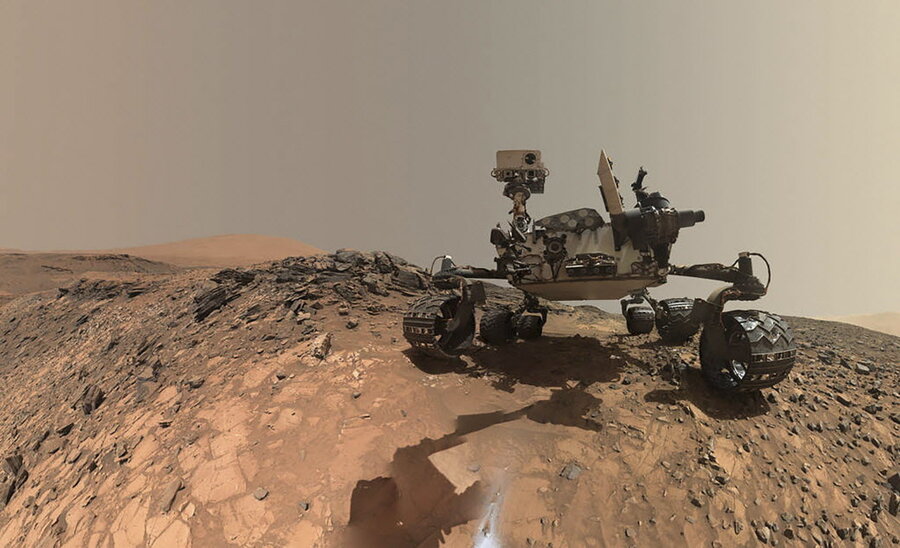What does Mars look like? More like us than we thought
Loading...
NASA’s Curiosity rover has been exploring Mars for nearly four years now, and most of the pictures it has taken have depicted an otherworldly, alien landscape, but the latest 360 Video image released on Friday shows a terrain that looks remarkably like Earth.
The image shows an area of Mars referred to as the Murray Buttes, named for Bruce Murray, the former director of NASA’s Jet Propulsion Laboratory, which manages the Curiosity mission. A butte is an isolated hill, similar to a mesa, but narrower, and this one looks like a vista plucked from the deserts of the Southwestern United States.
“The buttes and mesas are capped with rock that is relatively resistant to wind erosion,” NASA wrote in a press release. “This helps preserve these monumental remnants of a layer that formerly more fully covered the underlying layer that the rover is now driving on.”
This is the second time that NASA has released a 360-degree video from Curiosity – the first was in March, when the rover discovered the Bagnold Dunes, the first active sand dunes seen outside Earth. Using technology created by Facebook and its virtual reality arm Oculus, NASA strung 57 images together to create an immersive video. This time, the panorama includes more than 130 images.
“This is just the beginning of what we can do with virtual reality and 360 video,” Mark Zuckerberg, Facebook founder and chief executive officer, posted on his personal Facebook page when the first NASA video came out.
After spending two years exploring the plains of Mars near Gale Crater, where Curiosity landed in 2012, the rover is now working on the 18,000-foot ascent up Mount Sharp, analyzing increasingly younger rocks as it goes. The buttes are the newest terrain Curiosity has explored so far.
The main goal of the mission, however, was to explore ancient layers of the Red Planet’s surface in order to find environments that could have supported microbial life, even billions of years ago.
Curiosity accomplished this last December when it discovered the chemical silica, a mineral compound of silicon and oxygen, which on Earth is usually deposited by water.
“On Earth, all the environments where we find this kind of silica require some kind of water activity,” said Jens Frydenvang, an astrogeologist at the Los Alamos National Laboratory in New Mexico, in a short video following the discovery. “Often it’s also a very nice environment to find microbial life.”
Curiosity’s work is providing valuable information for present and future space research, including the crewed Mars mission NASA is planning for 2030.








